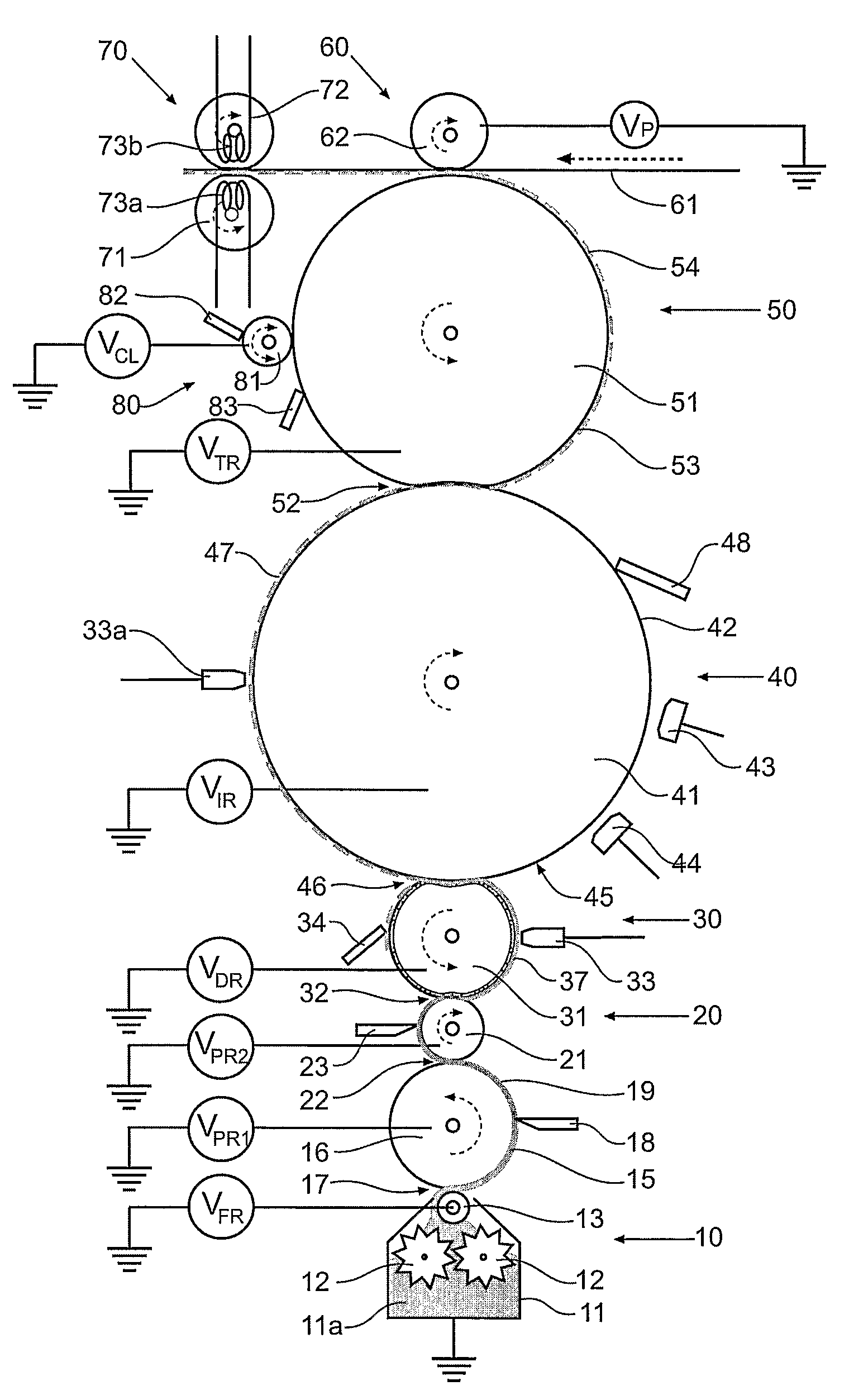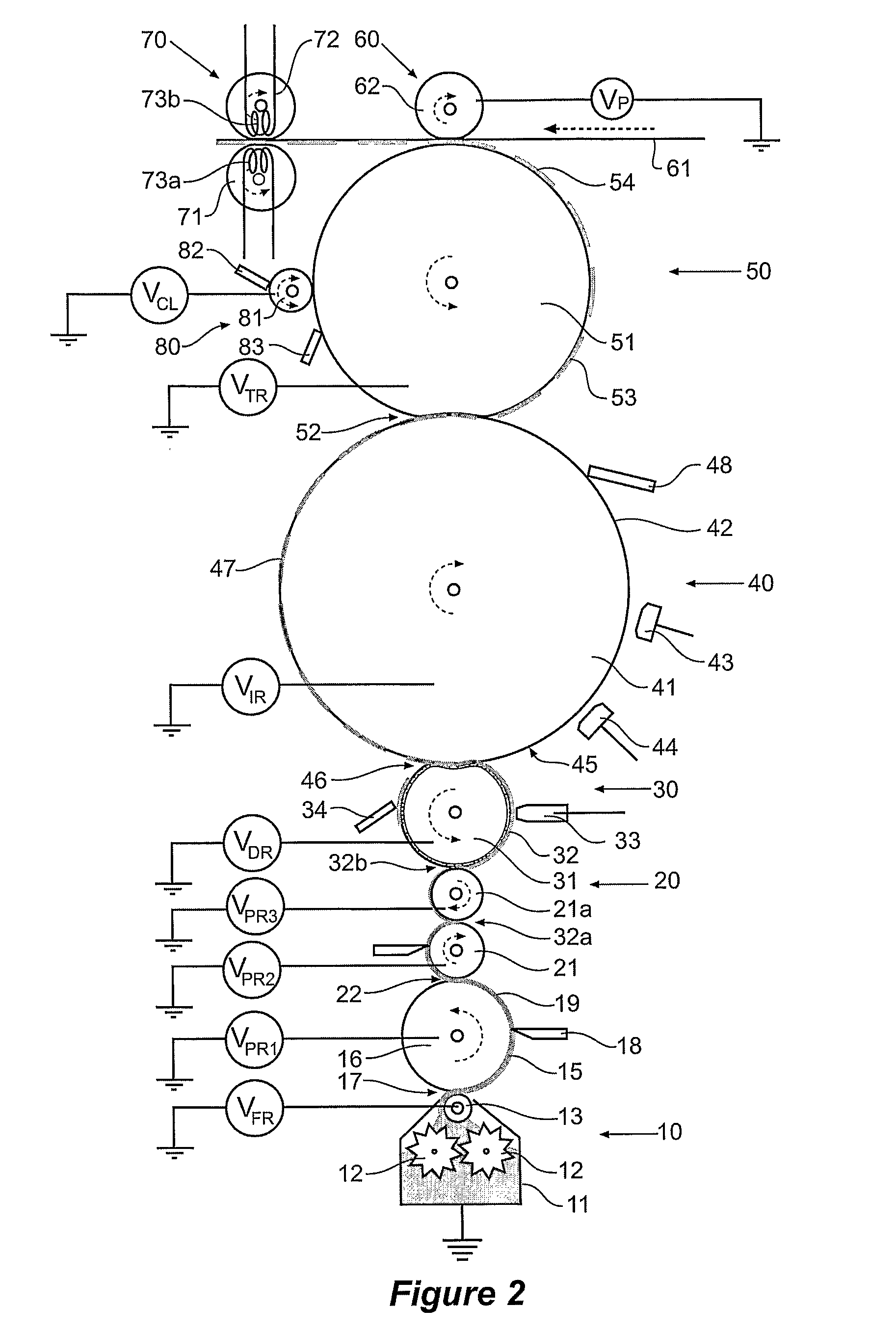For example the performance of
dry powder toners is very susceptible to environmental conditions, influencing, for example, charge stability, and therefore giving rise to variable image performance.
Also, the
large particle size of
dry powder toners is a major contributing factor in not allowing the achievement of highly resolved developed images.
In particular, the cost of fusing the image to paper or any other desired substrate significantly contributes to the running costs of such a printer.
Other objections are related to the problem of dusting.
Dust or fine or
small particles of toner are prone to escape from the developer, and these deposit onto any surface both within and outside the printing device, causing mechanical failures within the device and environmental problems outside the device.
This problem becomes severe when such
dry powder printing devices are run at high speed.
In addition, achieving
high resolution with dry
powder toners at high speed is difficult due to the fact that the dusting problem is further exacerbated by the need to reduce dry toner particle size to a level which will allow acceptable resolution at high speeds, which further compounds the difficulty and dangers in handling such fine powders.
Dry powder system therefore can not in practice achieve
high resolution images at high speeds, that are usually associated with analogue printing methods such as off-set and gravure printing.
Other disadvantages include cost of the general maintenance of the printer and cost of the dry
powder toner.
Furthermore, the liquid toners for these systems are operationally and chemically stable, particularly to environmental changes due to buffering properties of the carrier liquid, thus exhibiting a particularly long shelf-life.
Maintaining a uniform dispersion of the marking particles can be difficult in a low
viscosity toner
system.
Furthermore,
low volume of solids in the toner increases the amount of toner required to develop a given
latent image.
Such an arrangement of the development region has several drawbacks, such as a reduced strength and uniformity of the
electric field in the development gap, and additional complexity in the design required to maintain a constant gap in the printing direction, as well as across the page.
This usually results in reduced development efficiency,
edge effects and non-uniform
solid fill.
Devices using such liquid electrographic printing can also have some objectionable problems, especially when these devices are required to operate at speeds at or above 0.5 ms−1.
The main problem is in regard to the
solvent carry-out.
Such
solvent subsequently evaporates during image fusing, giving rise to
atmospheric pollution and also adding significantly to production costs.
A further
disadvantage of such liquid toning is the tendency for deposition of colouring matter in non-image or background areas which results in a general discolouration of the copy, normally referred to as background
staining or
fog.
In most instances however, the mechanical application of a pre-wet liquid can be problematic in that it requires high precision in dispensing a small and controlled amount of liquid in order to achieve background
fog prevention over the whole printing area.
It may therefore be difficult to adequately prevent toner adhesion to the non-image parts on the image bearing member.
This problem is further exacerbated at high speeds.
In those cases, there can be associated difficulties in recycling the liquid developer contaminated with the pre-wet liquid.
 Login to View More
Login to View More  Login to View More
Login to View More 


